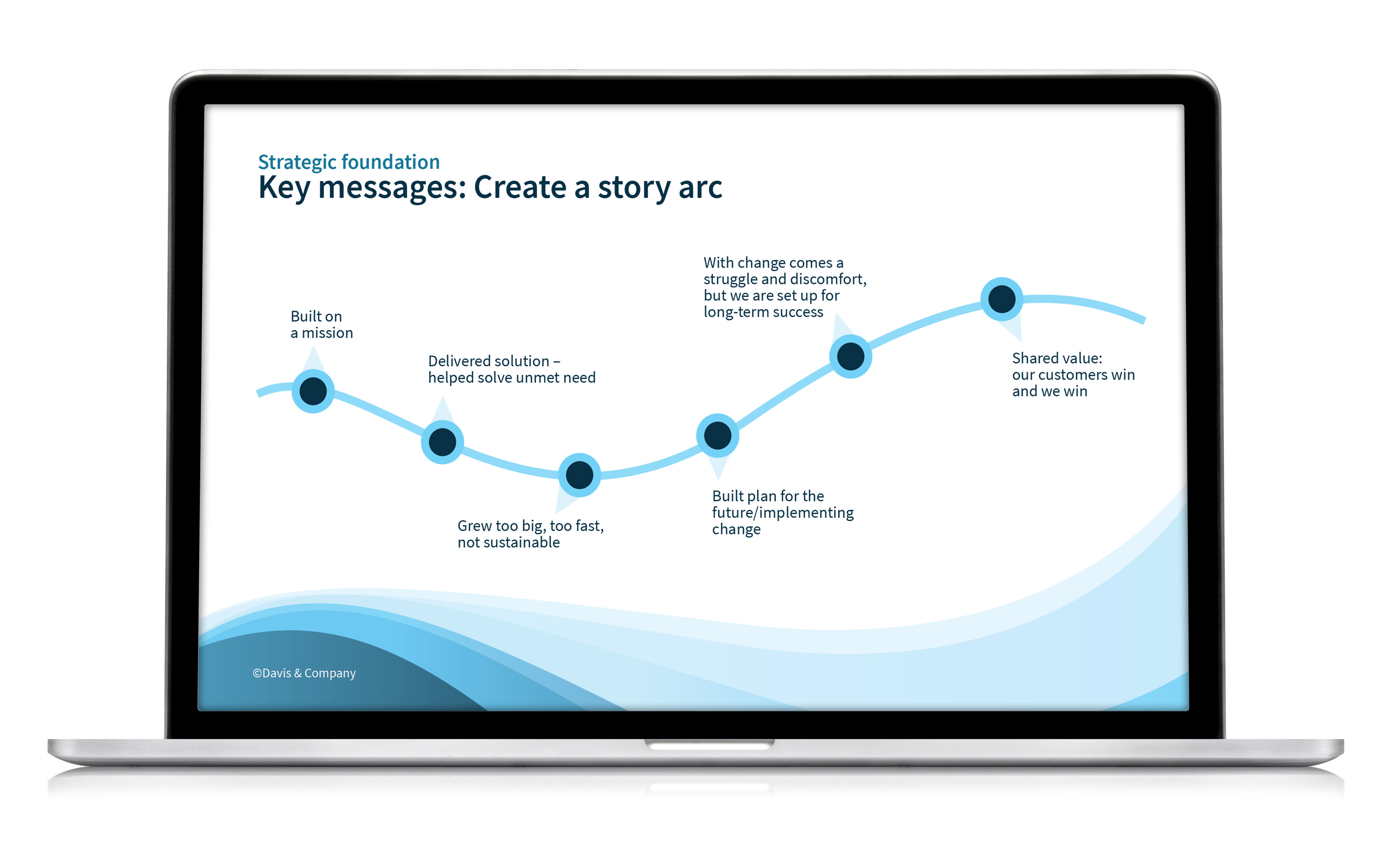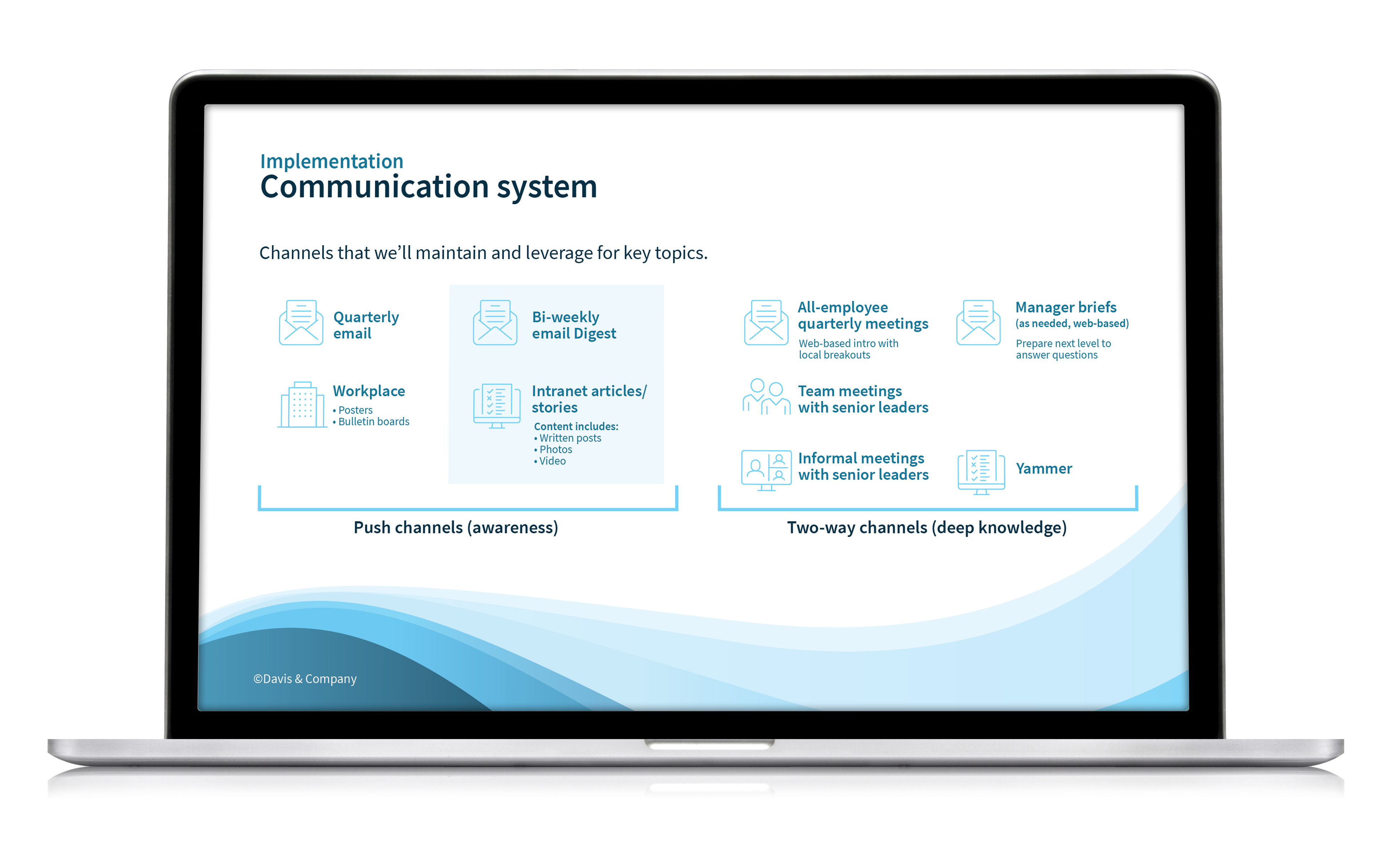|
No matter the topic, we develop strategic plans that help our clients think differently about communication, achieve goals and make change stick.
Design thinking and implementation
|
Case study: Helping employees embrace a new business strategy
Our client: A company that helps government entities and managed care organizations coordinate services that support aging adults and those with disabilities.
After several years of rapid growth, pressure on profits and a new business strategy, research with employees revealed they wanted context for a recent reorganization and upcoming changes. Leadership knew it was time to ramp up internal communication.
Davis & Company stepped in to shape an internal communication strategy and bring it to life.
Engaging leaders in planning
If the new internal communication approach was to be successful, leaders needed to own it. We started our work by bringing leaders into the planning process so they felt invested in what was created.
This included a series of one-on-one interviews with leaders to understand their current views of internal communication and a full-day, in-person planning workshop. During the workshop, we shared our interview findings, mapped stakeholders and took a deep dive into the new business strategy.
Simplifying complex information
With the research and planning workshop complete, we had a big takeaway: The new strategy was confusing! Leaders could barely explain it, so we knew getting employees to embrace it would be a challenge. Simplification would be key.
We started by writing the narrative: the story of the organization, why the new strategy was important now and how it would help the company succeed. The emotional language helped employees connect to the larger purpose of their work.
Next, we simplified the new strategy (a 75-page PPT deck) into a one-page infographic. This “strategy on a page” was given to employees as a handout, used in presentations and developed into posters that were placed in offices. This core communication tool was designed to help employees quickly and easily understand the goals of the company and how their roles fit within the bigger picture.

Creating an effective but easy-to-implement communication system
While strong messaging and powerful content were helpful, we knew it would only reach employees if an effective communication system was in place. The challenge? Whatever we created needed to be implemented by leaders and employees with limited communication expertise, since there wasn’t a communication function.
We started by improving existing channels: overhauling the content and format of all-employee meetings and emails. Next, we recommended a simple channel system—the organization’s collection of core channels, which included both push and two-way/interactive channels.
Finally, we conducted a workshop to train leaders on how to be effective communicators and followed up by providing tools and best practice tips.

The result?
Our simple approach proved effective and powerful. Leaders embraced their communication roles. Employees understood and believed in the new strategy.
The new town halls received record attendance—more than 97% of employees joined. The meeting format and content was embraced by employees. Post-meeting surveys revealed:
- 84% of participants felt the meeting was a good use of their time.
- 86% of participants felt questions were addressed candidly during the meeting.
- 92% of participants believed the organization “is headed in the right direction.”

